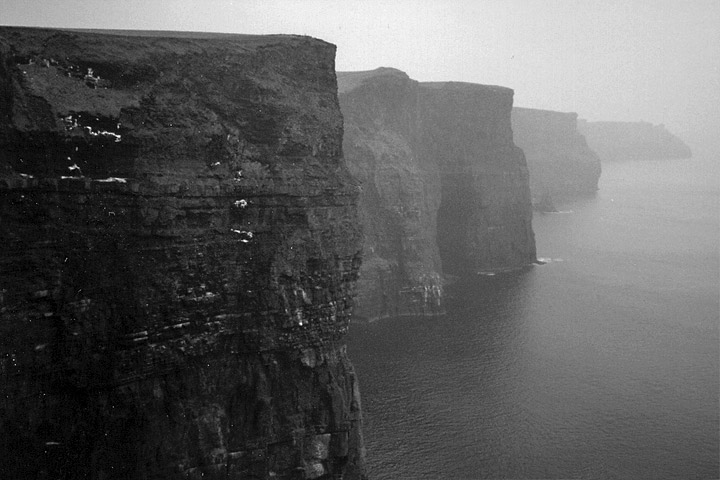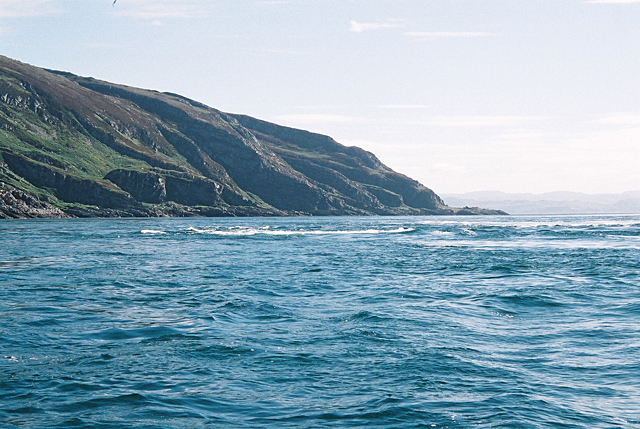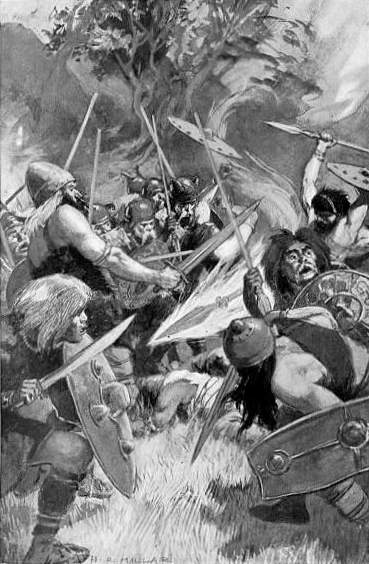|
Cailleach
In Gaelic ( Irish, Scottish and Manx) myth, the Cailleach (, ) is a divine hag, associated with the creation of the landscape and with the weather, especially storms and winter. The word literally means 'old woman, hag', and is found with this meaning in modern Irish and Scottish Gaelic, and has been applied to numerous mythological and folkloric figures in Ireland, Scotland, and the Isle of Man.Briggs, Katharine M. (1976) ''An Encyclopedia of Fairies''. New York, Pantheon Books. pp. 57-60. In modern Irish folklore studies, she is sometimes known as The Hag of Beara, while in Scotland she is known as Beira, Queen of Winter. Name ('old woman' or 'hag' in modern Irish and Scottish Gaelic) comes from the Old Irish ('veiled one'), an adjectival form of ('veil'), an early loan from Latin , 'woollen cloak'.Macbain, Alexander (1998) ''Etymological Dictionary Of Scottish-Gaelic''. New York: Hippocrene Books, , p. 63. The Cailleach is often referred to as the in Irish and ... [...More Info...] [...Related Items...] OR: [Wikipedia] [Google] [Baidu] |
The Hag Of Beara
The Hag of Beara (, also known as The White Nun of Beara, ''Cailleach, The Cailleach'' or The Old Woman of Dingle) is a mythic Irish Goddess: a ''Cailleach'', or divine hag, crone, or creator deity; literally a "hooded one" (''caille'' translates as "hood"). She is associated with the Beara Peninsula in County Cork, Ireland, and was thought to bring winter. She is best known as the narrator of the medieval Irish poem "The Lament of the Hag of Beara", in which she bitterly laments the passing of her youth and her decrepit old age.Hill (1927), p. 226 The Great Book of Lecan (c. 1400 AD) contains a collection of stories concerning her. The Hag of Beara is said to have been born in Dingle, County Kerry, at "Teach Mor" or the Great House, described as "the house farthest west in Ireland", and today identified as Tivore on the Dingle peninsula. She is said to have worn a veil, given to her by Saint Cummine, for a hundred years — perhaps a Christian appropriation of her hood.Hill (1 ... [...More Info...] [...Related Items...] OR: [Wikipedia] [Google] [Baidu] |
Slieve Gullion
Slieve Gullion ( or ''Sliabh Cuilinn'', "Culann's mountain") is a mountain in the south of County Armagh, Northern Ireland. The mountain is the heart of the Ring of Gullion and is the List of Irish counties by highest point, highest point in the county, with an elevation of . At the summit is a small lake and two ancient cairn, burial cairns, one of which is the highest surviving passage grave in Ireland. Slieve Gullion appears in Irish mythology, where it is associated with the Cailleach and the heroes Fionn mac Cumhaill and Cú Chulainn. It dominates the countryside around it, offering views as far away as County Antrim, Dublin Bay and County Wicklow on a clear day. Slieve Gullion Forest Park is on its eastern slope. Villages around Slieve Gullion include Meigh, Drumintee, Forkhill, Mullaghbawn and Lislea. The mountain gives its name to the surrounding countryside, and is the name of an electoral area within Newry, Mourne and Down District Council. Geography Slieve Gullion ... [...More Info...] [...Related Items...] OR: [Wikipedia] [Google] [Baidu] |
Carlin Stone
Carlin Stone or Carline Stane is the name given to a number of prehistoric standing stones and natural stone or landscape features in Scotland. The significance of the name is unclear, other than its association with old hags, witches, and the legends of the Cailleach. Etymology A 'Carle' in Scots is a commoner, a husband or in a derogatory sense, a churl or male of low birth. The name 'Carline', 'Cairlin', Carlin, 'Cyarlin', 'Kerlin' or 'Kerl' was also used in lowland Scots as a derogatory term for an old woman meaning an 'old hag'.Scots Dictionary It is from Old Norse ''Kerling'' or a corruption or equivalent in ScotsMcHardy, Stuart (1999), ''Scotland: Myth, Legend & Folklore''. Pub. Luath Press, Edinburgh. P. 24. of the Gaelic word “ |
Scottish Mythology
Scottish mythology is the collection of myths that have emerged throughout the history of Scotland, sometimes being elaborated upon by successive generations, and at other times being rejected and replaced by other explanatory narratives. Nature myths The myths and legends of Scotland have a "local colour" as they tell about the way of life during the olden times, apart from giving a perspective of the nature of the country during various seasons of the year. It was the belief that Beira, the Queen of Winter, had a firm hold on the country by raising storms during January and February thus preventing greenery to emerge. She was considered a tough and brutal old woman who stirred the deadly spiraling action of Corryvreckan, ushering snow, as well as torrents resulting in the overflow of rivers. Even the creation of lochs and mountains were attributed to her. Scottish mythology is not like the Greek and Roman myths as it deals with various aspects of nature. In this conte ... [...More Info...] [...Related Items...] OR: [Wikipedia] [Google] [Baidu] |
Mug Ruith
Mug Ruith (or Mogh Roith, "slave of the wheel") is a figure in Irish mythology, a powerful blind druid of Munster who lived on Valentia Island, County Kerry. He could grow to enormous size, and his breath caused storms and turned men to stone. He wore a hornless bull-hide and a bird mask, and flew in a ship called the ''roth rámach'', the "oared wheel". He had a fiery ox-driven chariot with blazing jewels that made night seem as bright as day, a star-speckled black shield with a silver rim, and a stone which could turn into a poisonous eel when thrown in water. Legend Stories about Mug Ruith are set in various periods of Irish history. Some say he lived during the reign of 3rd century High King Cormac mac Airt, while others put him in Jerusalem during the time of Christ. In ''Lebor Gabála Érenn'' he is said to have died in the reign of Conmael, nearly two thousand years before Cormac's time. Perhaps due to this array of times and settings, poets attributed the druid with ext ... [...More Info...] [...Related Items...] OR: [Wikipedia] [Google] [Baidu] |
Sheela Na Gig
A sheela na gig is a figurative carving of a naked woman displaying an exaggerated Human vulva, vulva. These carvings, from the Middle Ages, are Grotesque (architecture), architectural grotesques found throughout most of Europe on Architecture of cathedrals and great churches, cathedrals, castles, and other buildings. The greatest concentrations can be found in Ireland, Great Britain, France and Spain, sometimes together with male figures. Ireland has the greatest number of surviving sheela na gig carvings; Joanne McMahon and Jack Roberts cite 124 examples in Ireland and 45 examples in Britain. One of the best examples may be found in the Irish round tower, Round Tower at Rattoo, in County Kerry, Ireland. There is a replica of the Round Tower sheela na gig in the County Museum in Tralee town. Another well-known example may be seen at Kilpeck in Herefordshire, England. The carvings may have been used to ward off death, evil and demons. Other grotesque carvings, such as gargoyl ... [...More Info...] [...Related Items...] OR: [Wikipedia] [Google] [Baidu] |
Irish Mythology
Irish mythology is the body of myths indigenous to the island of Ireland. It was originally Oral tradition, passed down orally in the Prehistoric Ireland, prehistoric era. In the History of Ireland (795–1169), early medieval era, myths were Early Irish literature, written down by Celtic Christianity, Christian scribes, who Christianized them to some extent. Irish mythology is the best-preserved branch of Celtic mythology. The myths are conventionally grouped into 'List of literary cycles, cycles'. The Mythological Cycle consists of tales and poems about the god-like Tuatha Dé Danann, who are based on Ireland's pagan deities, and other mythical races like the Fomorians. Important works in the cycle are the ''Lebor Gabála Érenn'' ("Book of Invasions"), a legendary history of Ireland, the ''Cath Maige Tuired'' ("Battle of Moytura"), and the ''Aided Chlainne Lir'' ("Children of Lir"). The Ulster Cycle consists of heroic legends relating to the Ulaid, the most important of whi ... [...More Info...] [...Related Items...] OR: [Wikipedia] [Google] [Baidu] |
Labbacallee Wedge Tomb
Labbacallee Wedge Tomb () is a large pre-historic burial monument, located north-west of Fermoy and south-east of Glanworth, County Cork, Ireland. It is the largest Irish wedge tomb and dates from roughly 2300 BC. The tomb is a National Monument in State Care no. 318. It was the first megalithic tomb in the country to be described by an antiquarian writer, in John Aubrey’s manuscript of 1693. Features Labbacallee is the largest wedge tomb in Ireland. The tomb has three massive capstones, with the largest weighing 10 tonnes, and three large buttress stones at the back. The burial area consists of a long chamber, divided by a large vertical slab into two areas of unequal length. The eastern or inner end, when covered by the capstone, formed a sealed and self contained burial unit. The main chamber area, to the west, with two large capstones, was also sealed by a large ‘entrance’ stone. Access to both chambers was only possible by the removal of the end capstone. The gall ... [...More Info...] [...Related Items...] OR: [Wikipedia] [Google] [Baidu] |
Áine
Áine () is an Irish goddess of summer, wealth, and sovereignty. She is associated with midsummer and the sun,MacKillop, James (1998) ''Dictionary of Celtic Mythology'' Oxford: Oxford University Press pp.10, 16, 128 and is sometimes represented by a red mare. She is the daughter of Egobail,Cotterell, Arthur: ''The Encyclopedia of Mythology'', page 96. Hermes House, 2007. the sister of Aillen and/or Fennen, and is claimed as an ancestor by multiple Irish families. As the goddess associated with fertility, she has command over crops and animals and is also associated with agriculture. Áine is associated with County Limerick, where the hill of Knockainey () is named after her. This hill was the site of rites in her honour, involving fire and the blessing of the land, recorded as recently as 1879.Meehan, CarySacred Ireland/ref> She is also associated with sites such as Toberanna (), County Tyrone; Dunany (), County Louth; Lissan (), County Londonderry; and ''Cnoc Áine'' n ... [...More Info...] [...Related Items...] OR: [Wikipedia] [Google] [Baidu] |
Beltane
Beltane () or ''Bealtaine'' () is the Gaels, Gaelic May Day festival, marking the beginning of summer. It is traditionally held on 1 May, or about midway between the March equinox, spring equinox and summer solstice. Historically, it was widely observed in Ireland, Scotland, and the Isle of Man. In Ireland, the name for the festival in both Irish language, Irish and English is (). In Scottish Gaelic it is called (), and in Manx language, Manx Gaelic or . It is one of Quarter days, the four main Gaelic seasonal festivals—along with Samhain, Imbolc, and Lughnasadh—and is similar to the Welsh . Beltane is mentioned in the Early Irish literature, earliest Irish literature and is associated with important events in Irish mythology. Also known as ('first of summer'), it marked the beginning of summer and was when cattle were Transhumance, driven out to the summer pastures. Rituals were performed to protect cattle, people and crops, and to encourage growth. Special bonfires wer ... [...More Info...] [...Related Items...] OR: [Wikipedia] [Google] [Baidu] |
Irish Language
Irish (Standard Irish: ), also known as Irish Gaelic or simply Gaelic ( ), is a Celtic language of the Indo-European language family. It is a member of the Goidelic languages of the Insular Celtic sub branch of the family and is indigenous language, indigenous to the island of Ireland. It was the majority of the population's first language until the 19th century, when English (language), English gradually became dominant, particularly in the last decades of the century, in what is sometimes characterised as a result of linguistic imperialism. Today, Irish is still commonly spoken as a first language in Ireland's Gaeltacht regions, in which 2% of Ireland's population lived in 2022. The total number of people (aged 3 and over) in Ireland who declared they could speak Irish in April 2022 was 1,873,997, representing 40% of respondents, but of these, 472,887 said they never spoke it and a further 551,993 said they only spoke it within the education system. Linguistic analyses o ... [...More Info...] [...Related Items...] OR: [Wikipedia] [Google] [Baidu] |






